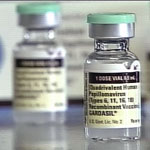Facts about the HPV Vaccine Gardasil
Facts about the HPV vaccine Gardasil
(Knoxville News Sentinel)
cervical cancer lawyer
(Knoxville News Sentinel)
HPV is the name of a group of viruses that includes more than 100 different types. More than 30 of these viruses can be passed from one person to another through sexual contact. For most women, the body’s defense system will clear the virus; however, some types of HPV can cause cervical cancer or abnormal cells in the lining of the cervix that can sometimes progress to cancer. Other types of HPV are a major cause of genital warts.
The Centers for Disease Control and Prevention estimates that about 6.2 million Americans become infected with genital HPV each year and that more than half of all sexually active men and women become infected at some time in their lives.
According to the CDC, if females are vaccinated before their first sexual experience, Gardasil prevents about 70 percent of cervical cancers.
Gardasil is given as three injections over a six-month period. The second dose is given two months after the first, and the third dose is given six months after the first. The injection is administered in the upper arm or thigh.
The vaccine can be given to girls as young as 9 and can be given to women up to age 26.
Gardasil is not approved for use in males to prevent HPV, but the manufacturer has a study under way to determine if it is safe and effective for them.
The clinical trials found no increased number of serious side effects in girls/women who received vaccine, compared with those who received placebo. Like all vaccines, Gardasil has some side effects, but the CDC’s Advisory Committee on Immunization Practice has determined that the benefits outweigh the risks.
It is not yet known if boosters will be needed. Studies show persistent high protection from the vaccine through five years and suggest protection will last much longer.
Sources: www.cdc.gov; www.fda.gov
cervical cancer lawyer


